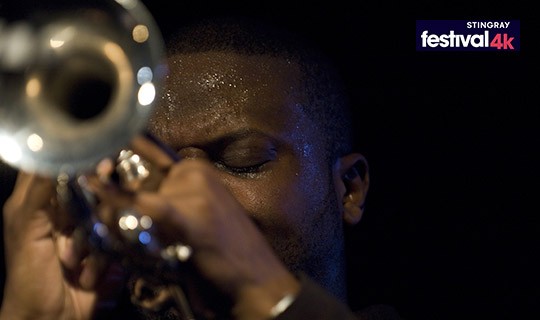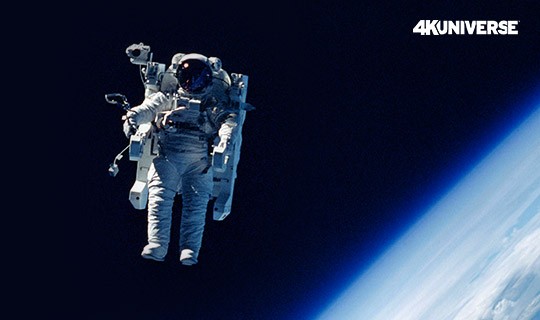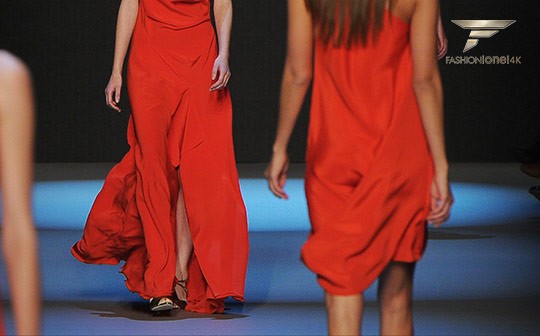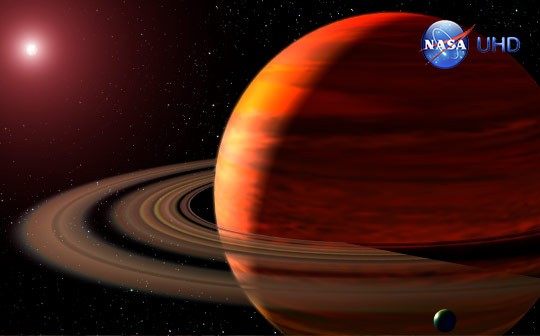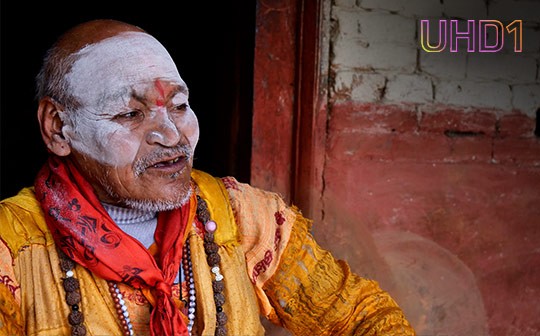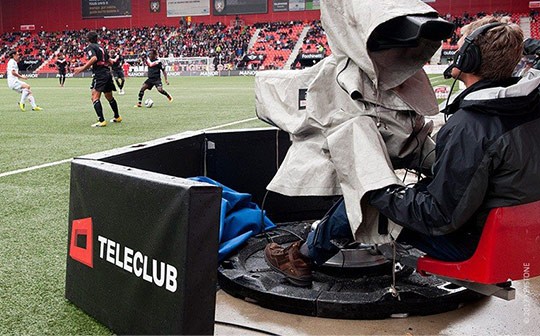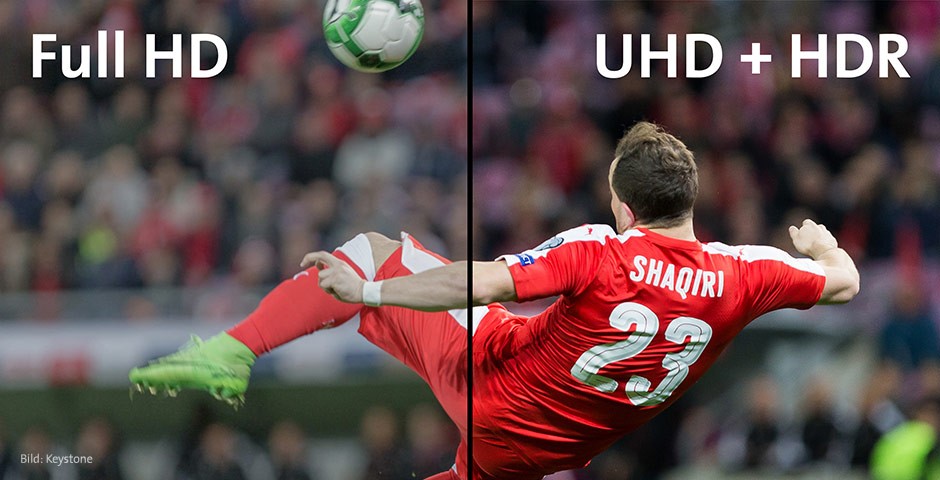
It looks as if HD is on the way out. Just take a look in the shops: almost all new devices are now UHD-ready. Equipped for a technology that makes things even clearer, better and richer in contrast. Its full effect is best appreciated on very large screens. In theory, at least. In practice though, there isn’t a lot of content out there. Apart from Swisscom, the majority of Swiss providers have very few UHD channels on offer or just test channels. Not one single major channel in Central Europe continually broadcasts in UHD. Camera, production and studio engineering would have to undergo extensive changes. The investment involved in the switch to HD is too recent to switch again.
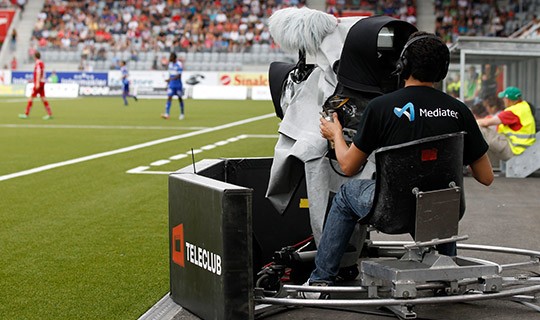
Swisscom TV and Teleclub are leading the way, broadcasting the Super League in UHD. Image: Keystone
By contrast, Teleclub is one of the pioneers in this field: the Swiss channel has already begun with exclusive football matches in UHD exclusively for Swisscom TV, ahead of most other international sport providers. 144 Swiss matches are aired during each football season. It is certainly worth it: every additional pixel brings greater viewing clarity to the beautiful game.
Teleclub has already purchased many feature films and documentaries on the international market. This selection is also exclusively available on Swisscom TV, on ‘Teleclub on demand’ and ‘Teleclub now’.
Otherwise, only YouTube and Netflix are among the few platforms to regularly provide UHD content so far. Netflix in particular is reported to tailor the scripts of whole series to UHD technology. Indeed, it is only in UHD that you can appreciate the full impact of Netflix-exclusive productions such as Stranger Things or Narcos. Documentaries such as Chef’s Table are especially impressive: you can see every single delicious grain of rice with UHD. One reason for this is the use of an additional technology: HDR, which enhances UHD through active image management. In greatly simplified terms, HDR causes the TV to display a more realistic colour range, with an expanded contrast ratio, providing an even better, higher contrast picture. Experts, therefore, are hailing UHD with HDR a double revolution.
At the present time, however, there are a number of competing HDR standards: the widely used HDR10, Samsung’s HDR10+, HLG (a format co-developed with the BBC that is primarily used for live content), and LG’s Dolby Vision, which is also used by Netflix and Apple TV. The new Swisscom Box from Swisscom TV thus conforms to all standards and is perfectly compatible with the latest generation of televisions, which can typically display more than one standard without a problem. It is even the first box of its kind in Europe to support Dolby Vision. Worth knowing: Dolby Vision, like HDR10+, is one of the next-generation HDR standards, offering an even better HDR display than the widely used HDR10 standard (without the plus).
The best UHD channels on Swisscom TV at a glance
What you need to enjoy UHD on Swisscom TV:
- A Swisscom connection with at least 33 Mbit/s bandwidth
- The UHD-ready Swisscom TV-Box or the new Swisscom Box
- A UHD-ready television set (also called 4K)
- Optional, but recommended: the TV supports HDR and therefore comes with dynamic standard HDR10+ (not to be confused with HDR 10) or Dolby Vision (not to be confused with sound technologies such as Dolby Stereo or Dolby Atmos). Several manufacturers currently offer devices that are able to display both HDR10 and HLG, as well as Dolby Vision. This combination is not only an interesting option for viewers of Netflix, which requires Dolby Vision.
- To receive the new UHD channels, you will need an inOne subscription with Swisscom TV L and the “TV Deutsch+” top package (included free with Swisscom TV L, available at an extra charge for Swisscom TV M or S subscribers).
Acronym jungle: what do they mean?
| SD: | Conventional digital television standard with maximum 720×576 pixel. Still common for DVDs and digital TV via antenna. |
| HD: | High definition picture with maximum 1920×1080 pixel. Common on most channels today, often recognisable by the HD logo. Also usual on Blu-ray. |
| UHD: | Ultra HD, four times higher definition than HD: maximum 3840×2160 pixel. |
| 4K / 8K: | Technologies that exceed even the UHD standard. 4K only slightly improves upon the standard so is often equated with UHD. 8K is still in the test phase. |
| HDR: | High Dynamic Range in combination with UHD provides a much higher contrast picture. |
| HDR10 / HLG: | Standards for displaying HDR. Both are widespread and supported by most new UHD-ready devices. |
| HDR10+ / Dolby Vision: | Competing standards that enable even better display of HDR content. The majority of new devices support at least one of the two standards. |
Subscribe to news
Subscribe to our news by e-mail
Contact us
Address
Swisscom
Media Relations
Alte Tiefenaustrasse 6
3048 Worblaufen
Postal address:
Postfach, CH-3050 Bern
Switzerland
Contact
Tel. +41 58 221 98 04
media@swisscom.com


